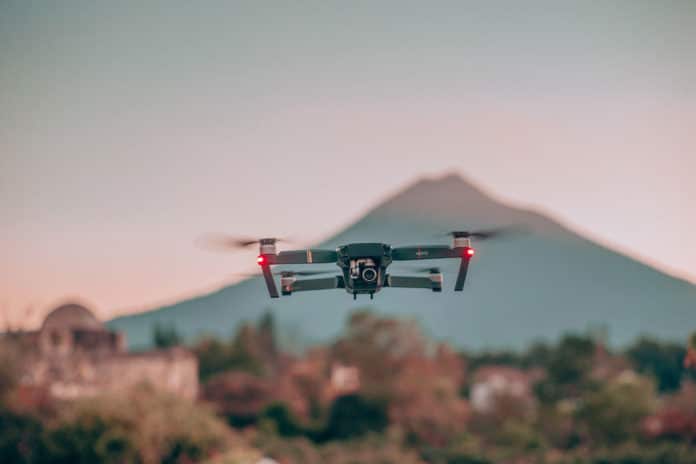Seattle-based Electric Sky has begun building the world’s first “Whisper Beam” transmitter for wirelessly powering in-flight UAVs (unmanned aerial vehicles), with funding from the U.S. Defense Advanced Research Projects Agency (DARPA).
Previous wireless charging for drones has relied on microwaves and lasers, which start strong but get weaker as they travel over a distance. The Whisper Beam aims to do the opposite and would get stronger as it approaches a receiver, the company’s CEO Robert Millman said. Electric Sky reportedly uses a transmitter that sends out radio waves that then focus on the receiver, in this case, the drone.
“Whisper Beam technology is the electromagnetic equivalent of a whispering gallery,” said Robert Millman, CEO of Electric Sky. “In a whispering gallery, a single listener across the room can hear the speaker, but no one else can, not even people standing directly between the speaker and listener. The sound is too weak for them to hear.”
With Whisper Beam technology, radio waves self-focus at the receiver, enabling the UAV to draw kilowatts of power in all weather. The waves are weak everywhere else, even directly between transmitter and UAV.
Long-distance power transmission is not impossible; it’s just never been economical. Greason says the new method reduces the cost of the ground transmitter and the size of the vehicle’s onboard receiver. The technology can be used on any aircraft that uses electric propulsion, whether fueled by batteries or hydrogen fuel cells.
“Whisper Beam technology is particularly helpful in the power-hungry phases of takeoff and climb, enabling vehicle designers to meet other requirements to extend range, enhance flight safety, reduce peak loads on batteries, and shorten ground turnaround times,” Greason added.
For the DARPA project, Electric Sky will explore adapting the new wireless architecture to power a swarm of UAVs. Working under DARPA’s Small Business Innovation Research (SBIR) program, the company will build and test a lab-bench demonstrator that can work at short distances. These experiments will supply data needed to upgrade to a higher power and longer distances, then adapt the transmitter to follow UAVs across the sky.
